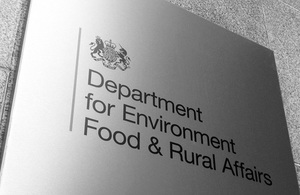Reservoir flood maps published
Maps showing areas that could flood, in the unlikely event that a reservoir failed, now available.

To help authorities and emergency services plan for the risk of flooding in the unlikely event that a reservoir failed, maps showing areas that could flood have now been published online.
Dam breach and flood modelling techniques were used to produce a national set of reservoir flood maps for England and Wales. The maps were created showing how far flood water would spread from the reservoir in a worst case scenario so that emergency services and councils have all the information they need to put plans in place to protect people. The maps are now available on the Environment Agency website.
Environment Minister Richard Benyon said:
“While the risk of a reservoir failure is extremely low the safety of the public must remain our top priority and where there is even a small risk we need to make sure that we are prepared.
“These reservoir flood maps will help ensure that authorities and emergency services know what to do to reduce the possibility of water escaping from a reservoir and how to reduce damage and danger if a reservoir does fail.”
The Welsh Minister for Environment Sustainability and Housing, Jane Davidson said:
“Making the outline maps accessible on the Environment Agency’s web pages is important, not only to help raise the public’s awareness of wider flood risk information but also to spell out what actions they should take in the unlikely event of a reservoir emergency.”
This work has been carried out following recommendations from Sir Michael Pitt in his review into the flooding of 2007. Sir Michael recommended that outline reservoir flood maps should be made available to the public online in the context of wider flood risk information.
The likelihood of reservoir flooding is much lower than other forms of flooding. Current reservoir regulation, which has been further enhanced by the Flood and Water Management Act, aims to make sure that all reservoirs are properly maintained and monitored in order to detect and repair any problem.
Notes
- The maps can be viewed at www.environment-agency.gov.uk/homeandleisure/floods/124783.aspx.
- The maps are available through the “What’s in your back yard” facility. They will allow members of the public to view maps for large raised reservoirs in England and Wales.
- Defra has provided £1.25 million to enable local authorities and other organisations to prepare emergency plans including informing residents if they live in reservoir flood zones. Funding for future years has been provided for within the local government formula grant settlement.
- The outline reservoir flood maps do not give any information about the likelihood of reservoir failure, the depth and speed of the flood waters, or the length of time it would take for the flood waters to reach any location. Even in a worst case scenario many areas shown as possibly being at risk of reservoir flooding would be expected to receive no more than a few centimetres of flood water.
- In England and Wales, the Environment Agency has a regulatory role for reservoir safety, under the Reservoirs Act 1975. It ensures that reservoirs are regularly inspected and essential safety works are carried out. The Environment Agency has the power to prosecute reservoir owners for failure to carry out essential safety works, and where emergency works are required, it has the power to carry out these works itself.